-
Posts
2,335 -
Joined
-
Last visited
-
Days Won
12
Content Type
Profiles
Forums
Blogs
Gallery
Events
Store
Posts posted by Bear
-
-
Republic of Texas $10 dated 1838
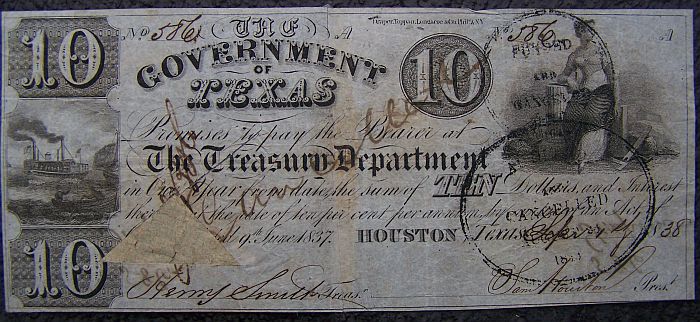 0
0 -
-
Hello,
This is a very rare enlistment document for the army of Texas dated 1837. The volunteer was born in Ireland and signed for the duration of the war with Mexico. The Texas army consisted of around 1500 soldiers.
thanks,
barry
 0
0 -
Hello Chris,
I love documents Napoleonic but the euro is killing me. Here in the states they have some great blades that reflect US dollars. I think I might starting collecting blades.
 I still owe you!!!!
I still owe you!!!! 
thanks,
barry
0 -
Hello,
I never knew that Indian(or are were they considered British during this time) Officers flew fighters during WWII. When I think of India during WWII I think of foot soldiers. I came across a website that made me think for a moment.
 In other words NEAT........ Although I mostly dwell in the 18th centuery.
In other words NEAT........ Although I mostly dwell in the 18th centuery. 
website: http://indianairforce.nic.in/show_page.php?pg_id=14
MARSHAL OF THE INDIAN AIR FORCE ARJAN SINGH
Marshal of the Indian Air Force Arjan Singh, DFC, was one pilot who grew up in the annals of the air force as the first chief for leading the force into war. He was Chief of Air Staff when the IAF saw action in its first combat of the modern age in 1965. He was hardly 44 years years of age when entrusted with the responsibility of leading the Indian Air Force, a responsibility he carried with considerable flamboyance and ?lan.
Arjan Singh was born on 15 April 1919, in Lyalpur, completing his education at Montgomery. He was still in college in 1938, 19 years of age when he was selected for the Empire Pilot training course at RAF Cranwell. His first posting on being commissioned was flying Westland Wapiti biplanes in the North Western Frontier Province as a member of the No.1 IAF Squadron. Arjan Singh, flew against the tribal forces, before he was transferred for a brief stint with the newly formed No.2 IAF Squadron. Later he moved back to No.1 as a Flying Officer, when the Squadron re-equipped with the Hawker Hurricane.
Promoted to Squadron Leader in 1944, Arjan Singh led the squadron against the Japanese during the Arakan Campaign. flying close support during the crucial Imphal Campaign and later assisting the advance of the allied forces to Rangoon, Burma. For his role in successfully leading the squadron in combat, Arjan Singh received the Distinguished Flying Cross (DFC) in 1944. He was given command of the IAF Display flight flying Hawker Hurricanes after the war which toured India giving demonstrations. On 15 August 1947, he had the unique honour of leading the fly-past of over a hundred IAF aircraft over Delhi, over the red fort.
Promoted to Wing Commander, he attended Staff College at UK, and immediately after Indian independence became the AOC, Ambala in the rank of Group Captain. In 1949, promoted to Air Commodore, Arjan Singh took over the Air Officer Commanding of Operational Command, which later came to be known as Western Air Command. Arjan Singh had the distinction of having the longest tenure as the AOC of Operational Command, from 1949-1952 and again from 1957-1961. Promoted to Air Vice Marshal, he was the AOC-in-C of Operational Command. Towards the end of the 1962 war, he was appointed the DCAS and became the VCAS by 1963. He was the overall commander of the joint air training exercises "Shiksha" held between the IAF, RAF and RAAF.
On 01 August 1964, Arjan Singh took over as the Chief of Air Staff in the rank of Air Marshal, which became the pinnacle of this career. Arjan Singh was the first Air Chief who kept his flying category till his CAS rank. Having flown over 60 different types of aircraft from Pre-WW-2 era biplanes to the more contemporary, Gnats & Vampires, he also had flown in transports like the Super Constellation.
Arjan Singh's, testing time came in September 1965, when the subcontinent was plunged into war. When Pakistan launched its Operation Grand Slam, in which an armoured thrust targeted the vital town of Akhnur, he was summoned into the Defence Minister's office with a request for air support.
With a characteristic non-chalance, he replied "...in an hour." And true enough, the air force struck the Pakistani offensive in an hour. He led the air Force through the war showing successful leadership and effort.
Though at a certain level, mistakes were made and planning could have been better, in all fairness, it must be said that the credit for thwarting Ayub Khan's grandiose plans to capture Kashmir is shared by the Indian Army and the Indian Air Force, and Arjan Singh for leading the air force through the war.
Arjan Singh was awarded the Padma Vibhushan for his leadership of the air force, and subsequently in recognition of the air force's contribution in the war, the rank of the CAS was upgraded to that of Air Chief Marshal and Arjan Singh became the first Air Chief Marshal of the Indian Air Force. He retired in August 1969, thereupon accepting ambassador ship to Switzerland. He remained a flyer to the end of his tenure in the IAF, visiting forward squadrons & units and flying with them. Arjan Singh was a source of inspiration to a generation of Indians and Officers.
In recognition of his services, the Government of India conferred the rank of the Marshal of the Air Force onto Arjan Singh in January 2002 making him the first and the only 'Five Star' rank officer with the Indian Air Force.
thanks,
barry
0 -
Hello,
Not my area and I'm taking a guess that it's German. Any info would be much appreciated.
thanks,
barry
 0
0 -
Most of the engraving on the blade is gone but I did find something that looks like a flag. If it is a flag I haven't found a match.
thanks,
barry
 0
0 -
Hello Ed,
Nice Photo! Is the soldier sitting wearing cavalry spurs on his boots?
thanks,
barry
0 -
His name is Troy Quinn and he looks happy to be alive. That big :D
0 -
Thanks
0 -
Close up
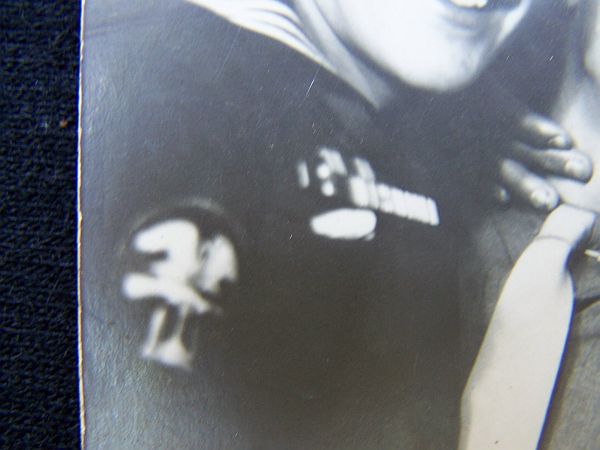 0
0 -
Hello,
I going through some old family pictures and found this one. I can't seem to track down what the badge is on his arm. Im guessing WWII.
thanks,
barry
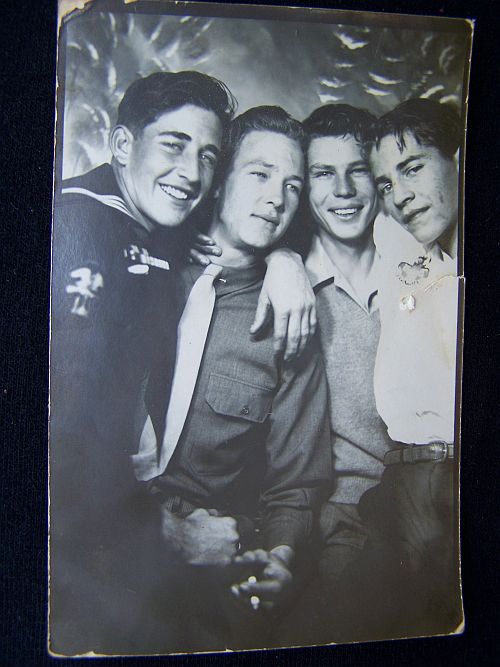 0
0 -
Maybe they had to wear some kind of uniform at the Navy Department.
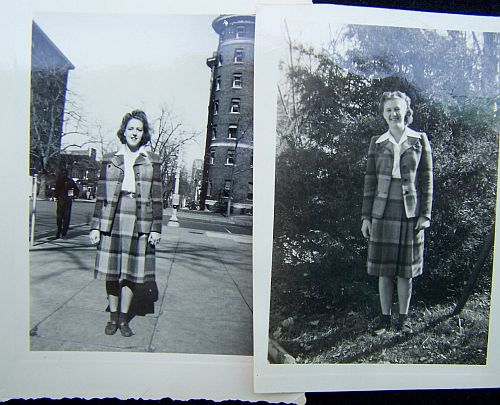 0
0 -
Welding
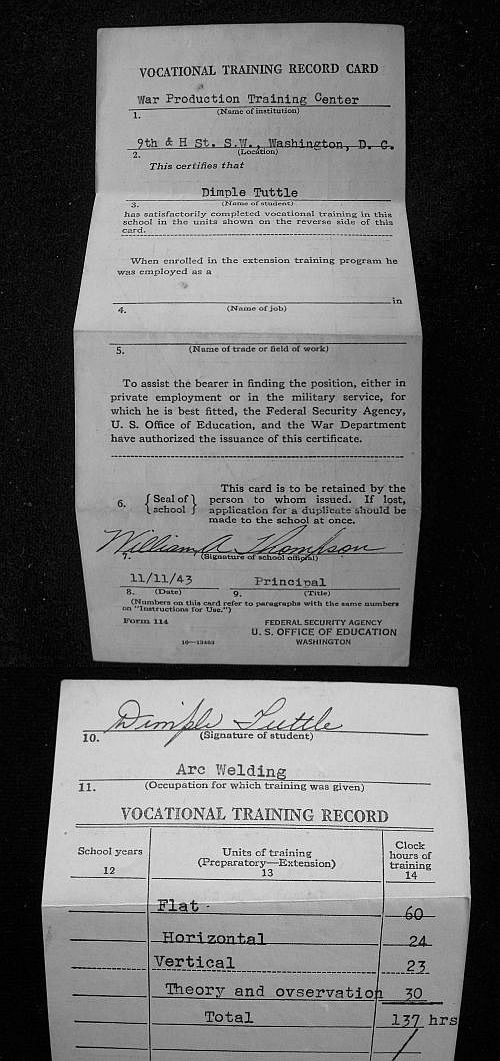 0
0 -
My Grandmother and Grandfather are in the middle. He loved motorcylces.
 0
0 -
-
Hello,
I've been put in charge of going through all the Brady Bunch family vacation photo slides and photo books.

I came across some shots of my grandmother and one of my grandfather in uniform.
Before she died she wrote down some notes of her days in Washington DC.
"In September of 1942 Dimple Tuttle and Maxine McMillon two 17 year olds from a small town in East Texas received Civil Service appointments to the Navy Dept in Washington DC. We were given $50 each for our room and board and a week bus pass to last until we received a pay day. We were put on a train and said good bye. We felt pretty uneasy about the unknown because we had never been much further away from home than church camp.
When we reached Washington we found the place to go for housing. We decided on a room with a family named Lewis. When we got settled in and got rid of our suitcases we went to the office that we were told to go to for our assignment. We went to work for the Aviation Marine Corp in the Navy Dept Out Office on the 3rd floor of the Navy building in records and statistics some of which were confidential material mostly concerning movement of troops.
It was a good experience for us girls we soon learned to budget and handle our money after running low a few times and wound up eating peanut butter and crackers with buttermilk for a few days. Other girls in the office got us to join the USO that took bus loads of girls on wed nights to Ft Meade Maryland for a dance. They always had good live bands to dance to. We both loved to dance.
The girls from our office wanted us go with them one night and we went to a bar. Me and Maxine didn't know what to order but their was a song at that time called Rum & Coca Cola so thats what we ordered. It tasted like motor oil and we both got sick. Our land lady told us to always order a Horses Neck next time.
At night we took an arc welding class with the thought that when we went home we could go to work at the ship yards and make lots of money. I was not allowed to go but Maxine went to work in Dallas."
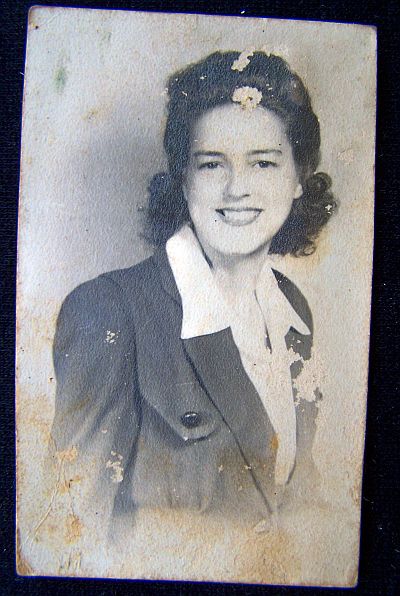 0
0 -
empty :banger:
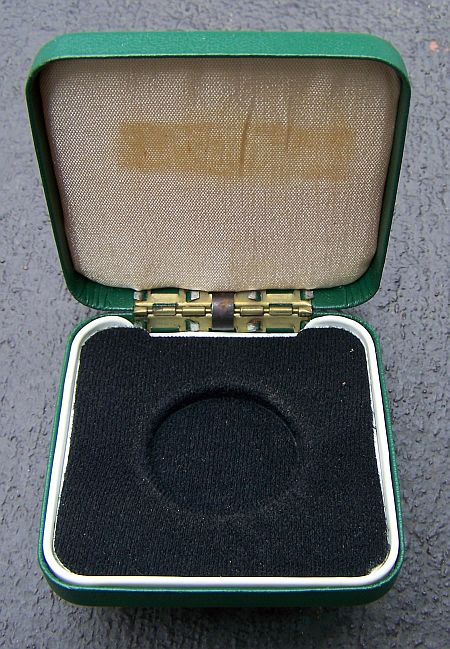 0
0 -
Hello,
I've had this coin case for along time and don't have a clue of went in it. My guess is Saudi Arabia.
thanks,
barry
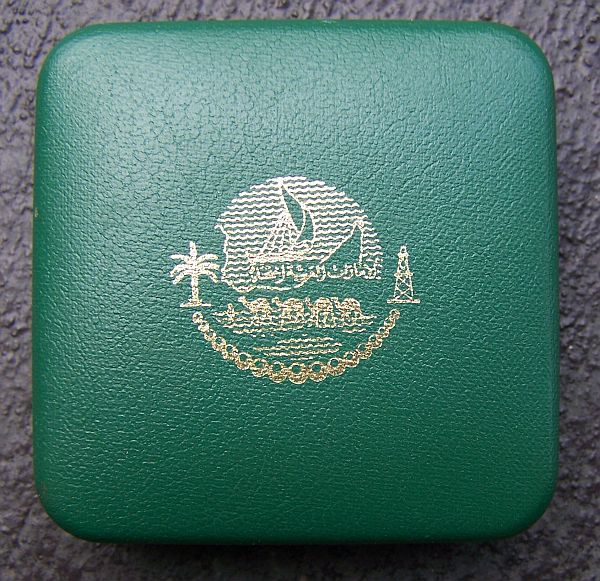 0
0 -
Thanks Kevin
I found a picture of George Washington's sword.
History Wired
http://historywired.si.edu/object.cfm?ID=305
George Washington's Sword
1776
For "self-defense or in the defense of [the] country and its rights"
General George Washington wore this battle sword and scabbard while commanding the Continental Army during the Revolutionary War. The weapon has a slightly curved, grooved steel blade; silver strips decorate its green ivory grip. When Washington passed the sword onto his army captain nephew, Samuel Washington, he charged him to use it only in "self-defense or in the defense of [the] country and its rights."
barry
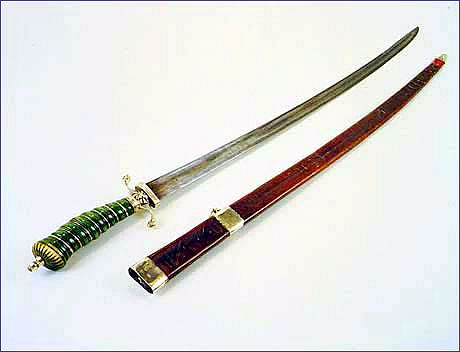 0
0 -
Blade
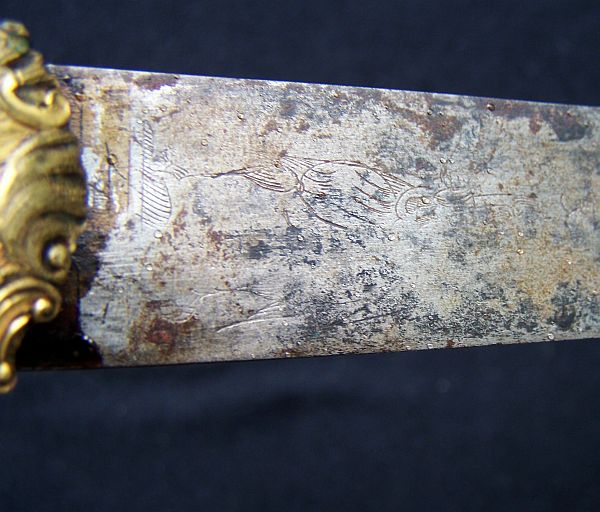 0
0 -
Handle
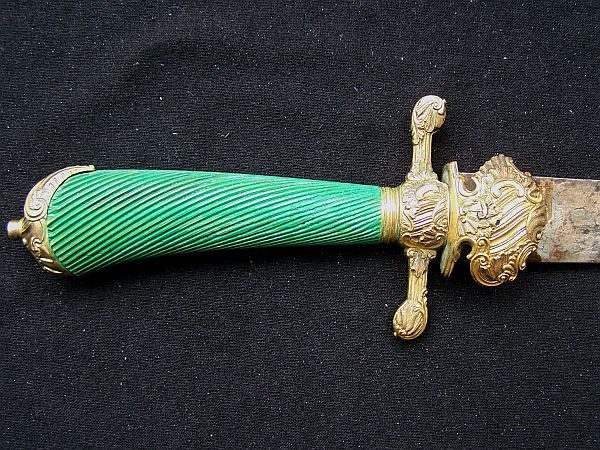 0
0 -
Hello,
I just got in this European hunting sword(ca. 1750) that has a green ivory handle. During the American Revolution this type of sword was used by American officers in battle and dress. George Washington also carried a sword with a green handle which resides at the Smithsonian. Many of the swords that American officers carried had green on the handle such as green & white stripes, green & black stripes, green & brown stripes ect...
I checked around and found that the color green was associated with independence during this time. In Ireland around 1776 the color green was banned for a while and couldn't be worn because of its link to independence.
However, American loyalist wore green uniforms.

thanks,
barry
 0
0 -
Paris 1802
The Commanding General, Massena,
To General Sanson, Director of the General Depot of War.
General,
The Adjutant Commandant Bailleul, who will present to you this letter, is so favorably known to me because of his talents in the topographical department, on which I had an opportunity to form an opinion in Switzerland and in the Army of Italy where he was on active service under my orders as Chief of the Bureau, that I wrote in his favor to General Andreossi, who replied to me that the services of this officer were so favorably known to him that he would with pleasure aid in securing for this officer the justice that I demand. So, with confidence and Friendship, General, I pray you to do this officer the important service of causing him to be assigned to the approaching organication of the geographical engineering department, for which he must already have been nominated by General Andreossi.
Greetings and friendship,
Massena
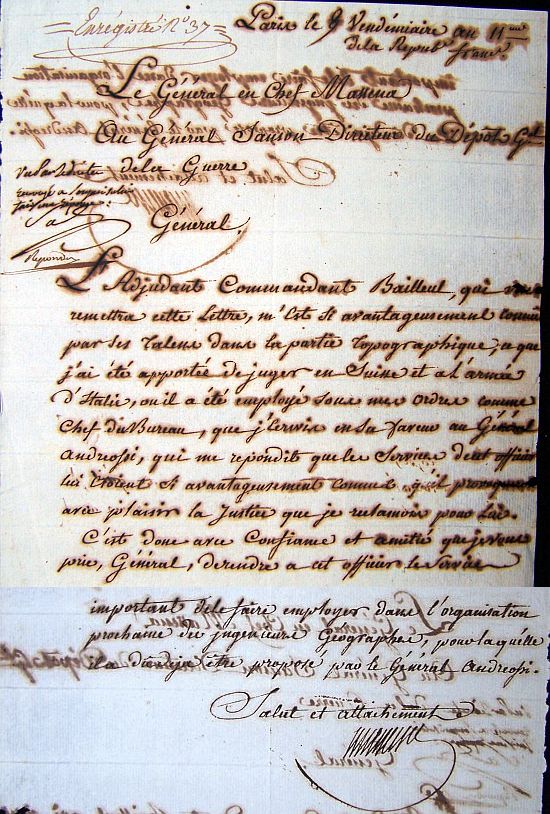 0
0




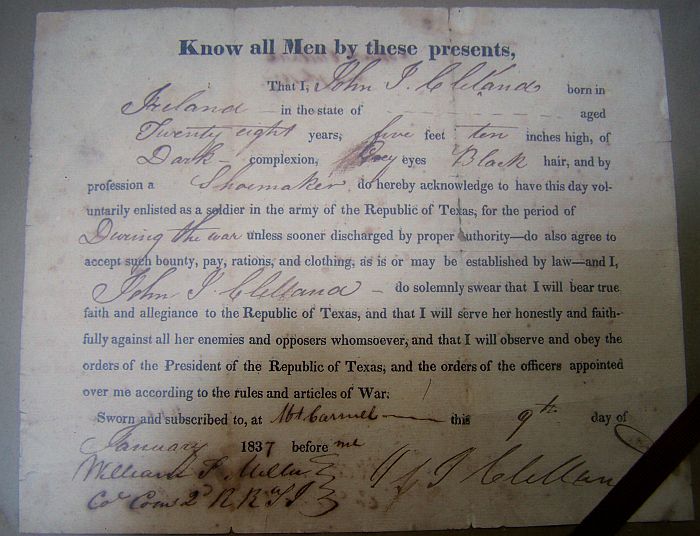
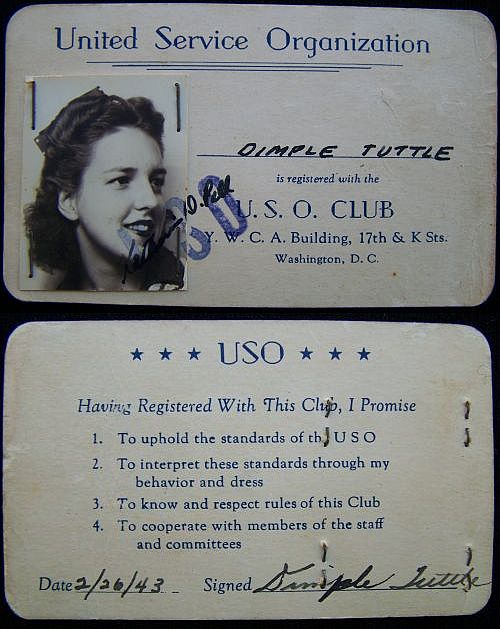
Republic of Texas
in United States of America
Posted
Thanks Paul
Hello Ed,
I don't collect medals but I wouldn't mind having one of those. Any Idea of how many were awarded. They were probably not given to the dead. I estimate that around 7500 Mexican soldiers fought during 1836.
1500 Mexican soldiers at Goliad
6000 Mexican soldiers at the Alamo
plus those in the Navy
thanks,
barry